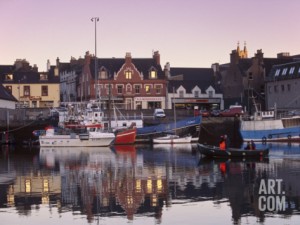History of Lewis

A BRIEF HISTORY OF THE ISLE OF LEWIS
The story of the Isle of Lewis is steeped in both history and mystery. Man has inhabited Leodhas, meaning marshy, for probably 5000 years. The Standing Stones and Stone Circles bear witness to this early occupation, as do the Iron Age forts and archaeological sites scattered around the Island.
Brochs (hill forts) and other evidence of the Iron Age that we see today were constructed from about 250 BC to 500 AD mainly on the coastal fringes.
We now observe Lewis with large areas of peatland and bog. However, this was not always the case. Up until about 1500 BC the Island was fertile, warmer and much less wet. Crofting was predictable, secure and the seafood plentiful. Prior to this time was when most of the monoliths and stone circles were constructed.
When the climate changed, the people of Lewis adapted but had to move to the coastal machair areas to survive. The acidic bog areas developed and peat is the result. A major date in the Lewis historical calendar was 1150 BC when mount Hekla on Iceland erupted, producing the equivalent of a ‘nuclear winter’ for Scotland. The effect on Lewis, Harris and the rest of Scotland was devastating.
The fortifications that were built on Lewis must have been to defend themselves from other Celtic groups, as this was well before the days of the Viking raiders. Duns and Brochs are basically fortifications; the only difference is that Brochs tend to be bigger. Domestic dwellings had a similar, but simpler construction. An excellent example can be seen at the West end of Bernera where there is a reconstruction next to the existing Iron Age village.
Throughout the years from the late 500’s Christianity made its presence felt throughout the Western Isles mainly through the work of the Monks of St Columba. The latter brought Christianity from Ireland and established a Christian settlement and Abbey on the Isle of Iona. One fine set of ruins can be visited on the area of land a few miles beyond the airport on the Eye Peninsula . The ruined church is known as St.Columba’s or the Eye Church.
Towards the end of the 800’s the relative stability of the Island was rudely awakened by summer visitors from Scandinavia. The Vikings were opportunist raiders to begin with but by the middle of the 900’s settled in many of the coastal areas and created farms and permanent residences. A few Viking buildings remain; the best examples for the visitor to see are the Mill and Forge near Shawbost, now renovated and Liamshader near Carloway. The Vikings also left a very important set of artistic relics in the world-famous Lewis Chessmen.
The real impact of the Vikings was on the environment. They were heavy users of timber and relied on it for their houses, boats and fuel. The native woodlands were finally and seriously reduced by a Viking leader called Magnus III who instigated a ‘scorched earth’ policy. The Vikings influenced the building techniques for years to come. The traditional ‘Black house’ has elements of Viking construction.
The Viking era came to an abrupt end after the Battle of Largs in 1263 when King Haakon of Norway was defeated by King Alexander the third of Scotland. Within three years, all of Norway’s lands in the West were returned to Alexander. Probably, this political change meant very little to the well-settled Viking farmers who must have been well integrated into the Island. However, several clan families were able to establish themselves under the new Scottish regime. The Clans were of mixed Viking and Celtic origin, some of them with traceable names from Norse leaders like ‘Leod’. His sons were therefore ‘Sons of Leod’, or MacLeod.
Other dominant clans were Morrison and MacAulay, mainly due to their loyalty to the Lords of The Isles, the MacDonalds. The place names of Lewis maintain a mixture of Viking and Celtic origin as do many Gaelic words. However, the enchanting soft lilt dialect of the modern Leosach is probably the most noticeable trace of this ancient fusion.
